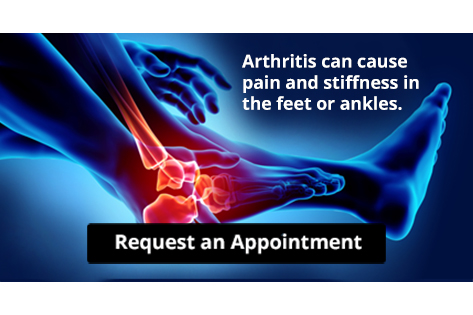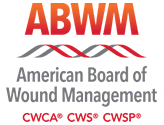Items filtered by date: October 2025
How Orthotics Can Improve Foot and Ankle Health
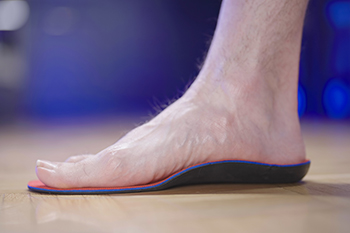
Orthotics are custom-made shoe inserts designed to support and align the feet, improving comfort and overall function. They help correct abnormal walking patterns and relieve pressure caused by plantar fasciitis, flat feet, bunions, and arthritis. By enhancing foot and ankle stability, orthotics can reduce pain, prevent injuries, and improve posture and balance. A podiatrist can perform a detailed evaluation to determine the best type of orthotic for your specific needs, ensuring a precise fit and maximum benefit. Whether for daily wear or athletic activity, orthotics can make a significant difference. If you have a specific foot or ankle condition, it is suggested that you consult a podiatrist for a personalized assessment and expert guidance to see if orthotics are right for you.
If you are having discomfort in your feet and would like to try orthotics, contact Barbara J. Aung, DPM from Aung Foot Health Clinic . Our doctor can provide the care you need to keep you pain-free and on your feet.
What Are Orthotics?
Orthotics are inserts you can place into your shoes to help with a variety of foot problems such as flat feet or foot pain. Orthotics provide relief and comfort for minor foot and heel pain but can’t correct serious biomechanical problems in your feet.
Over-the-Counter Inserts
Orthotics come in a wide variety of over-the-counter inserts that are used to treat foot pain, heel pain, and minor problems. For example, arch supports can be inserted into your shoes to help correct overarched or flat feet, while gel insoles are often used because they provide comfort and relief from foot and heel pain by alleviating pressure.
Prescription Orthotics
If over-the-counter inserts don’t work for you or if you have a more severe foot concern, it is possible to have your podiatrist prescribe custom orthotics. These high-quality inserts are designed to treat problems such as abnormal motion, plantar fasciitis, and severe forms of heel pain. They can even be used to help patients suffering from diabetes by treating foot ulcers and painful calluses and are usually molded to your feet individually, which allows them to provide full support and comfort.
If you are experiencing minor to severe foot or heel pain, it’s recommended to speak with your podiatrist about the possibilities of using orthotics. A podiatrist can determine which type of orthotic is right for you and allow you to take the first steps towards being pain-free.
If you have any questions, please feel free to contact our office located in Tuscon, AZ . We offer the newest diagnostic and treatment technologies for all your foot care needs.
Children and Flat Feet
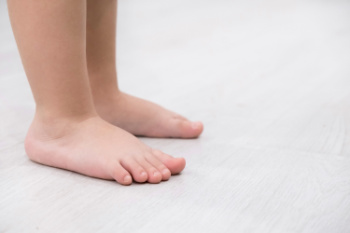
Flat foot in children occurs when the arches of the feet do not develop properly, causing the entire sole to touch the ground. While many children outgrow this condition, some experience pain due to underlying issues such as tarsal coalition, which is an abnormal connection between foot bones, or stress fractures from repetitive activity. In severe cases, surgery may be needed to correct structural problems. A podiatrist can evaluate the cause of flat foot pain, provide custom orthotics, recommend stretching or strengthening exercises, and discuss other treatment options. If your child complains of foot pain or has difficulty walking, it is suggested that you schedule an appointment with a podiatrist who can offer effective relief and management tips.
Flatfoot is a condition many people suffer from. If you have flat feet, contact Barbara J. Aung, DPM from Aung Foot Health Clinic . Our doctor will treat your foot and ankle needs.
What Are Flat Feet?
Flatfoot is a condition in which the arch of the foot is depressed and the sole of the foot is almost completely in contact with the ground. About 20-30% of the population generally has flat feet because their arches never formed during growth.
Conditions & Problems:
Having flat feet makes it difficult to run or walk because of the stress placed on the ankles.
Alignment – The general alignment of your legs can be disrupted, because the ankles move inward which can cause major discomfort.
Knees – If you have complications with your knees, flat feet can be a contributor to arthritis in that area.
Symptoms
- Pain around the heel or arch area
- Trouble standing on the tip toe
- Swelling around the inside of the ankle
- Flat look to one or both feet
- Having your shoes feel uneven when worn
Treatment
If you are experiencing pain and stress on the foot you may weaken the posterior tibial tendon, which runs around the inside of the ankle.
If you have any questions, please feel free to contact our office located in Tuscon, AZ . We offer the newest diagnostic and treatment technologies for all your foot care needs.
Foot Problems in Soccer Players

Soccer players put their feet under constant stress, which can lead to several common problems. Scrapes may occur from contact with the ground or another player. Athlete’s foot is a fungal infection that thrives in damp shoes, causing itching and redness. Blisters form from friction between the skin and cleats, while calluses develop as thickened skin from repeated pressure. Ingrown toenails can result from improper nail trimming or tight footwear, causing pain and swelling. Prevention includes wearing well-fitted cleats, keeping feet clean and dry, and trimming nails correctly. A podiatrist can diagnose and treat these issues, while offering personalized advice for prevention. If you enjoy playing soccer, and have developed foot or ankle pain, it is suggested that you schedule an appointment with a podiatrist who can treat various issues of this nature.
Sports related foot and ankle injuries require proper treatment before players can go back to their regular routines. For more information, contact Barbara J. Aung, DPM of Aung Foot Health Clinic . Our doctor can provide the care you need to keep you pain-free and on your feet.
Sports Related Foot and Ankle Injuries
Foot and ankle injuries are a common occurrence when it comes to athletes of any sport. While many athletes dismiss the initial aches and pains, the truth is that ignoring potential foot and ankle injuries can lead to serious problems. As athletes continue to place pressure and strain the area further, a mild injury can turn into something as serious as a rupture and may lead to a permanent disability. There are many factors that contribute to sports related foot and ankle injuries, which include failure to warm up properly, not providing support or wearing bad footwear. Common injuries and conditions athletes face, including:
- Plantar Fasciitis
- Achilles Tendinitis
- Achilles Tendon Rupture
- Ankle Sprains
Sports related injuries are commonly treated using the RICE method. This includes rest, applying ice to the injured area, compression and elevating the ankle. More serious sprains and injuries may require surgery, which could include arthroscopic and reconstructive surgery. Rehabilitation and therapy may also be required in order to get any recovering athlete to become fully functional again. Any unusual aches and pains an athlete sustains must be evaluated by a licensed, reputable medical professional.
If you have any questions please contact our office located in Tuscon, AZ . We offer the newest diagnostic and treatment technologies for all your foot and ankle needs.
Types of Webbed Toes in Newborns
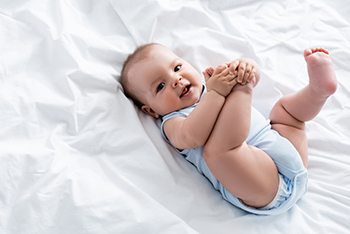
Webbed toes, also called syndactyly, occur when two or more toes are joined together at birth. This condition develops during fetal growth when the tissue between toes does not fully separate. Webbed toes may appear alone or as part of a genetic condition, and the type depends on how much tissue is involved. In simple syndactyly, only skin and soft tissue connect the toes. Complex syndactyly involves bones, with some or all toes fused together. Complicated syndactyly goes further, where abnormal bone or tendon formation creates additional changes in the foot. The most common form affects the second and third toes, but fusion can also occur between the fourth and fifth toes. A podiatrist can evaluate the extent of fusion, discuss whether surgery is needed to improve function or appearance, and guide the recovery process. If you have a child born with webbed toes, it is suggested that you schedule an appointment with a podiatrist for an exam, diagnosis, and treatment.
Congenital foot problems require immediate attention to avoid future complications. If you have any concerns, contact Barbara J. Aung, DPM of Aung Foot Health Clinic . Our doctor can provide the care you need to keep you pain-free and on your feet.
Congenital foot problems are deformities affecting the feet, toes, and/or ankles that children are born with. Some of these conditions have a genetic cause while others just happen. Some specific foot ailments that children may be born with include clubfeet, polydactyly/macrodactyly, and cleft foot. There are several other foot anomalies that can occur congenitally. What all of these conditions have in common is that a child may experience difficulty walking or performing everyday activities, as well as trouble finding footwear that fits their foot deformity. Some of these conditions are more serious than others. Consulting with a podiatrist as early as possible will help in properly diagnosing a child’s foot condition while getting the necessary treatment underway.
What are Causes of Congenital Foot Problem?
A congenital foot problem is one that happens to a child at birth. These conditions can be caused by a genetic predisposition, developmental or positional abnormalities during gestation, or with no known cause.
What are Symptoms of Congenital Foot Problems?
Symptoms vary by the congenital condition. Symptoms may consist of the following:
- Clubfoot, where tendons are shortened, bones are shaped differently, and the Achilles tendon is tight, causing the foot to point in and down. It is also possible for the soles of the feet to face each other.
- Polydactyly, which usually consists of a nubbin or small lump of tissue without a bone, a toe that is partially formed but has no joints, or an extra toe.
- Vertical talus, where the talus bone forms in the wrong position causing other bones in the foot to line up improperly, the front of the foot to point up, and the bottom of the foot to stiffen, with no arch, and to curve out.
- Tarsal coalition, when there is an abnormal connection of two or more bones in the foot leading to severe, rigid flatfoot.
- Cleft foot, where there are missing toes, a V-shaped cleft, and other anatomical differences.
- Macrodactyly, when the toes are abnormally large due to overgrowth of the underlying bone or soft tissue.
Treatment and Prevention
While there is nothing one can do to prevent congenital foot problems, raising awareness and receiving neonatal screenings are important. Early detection by taking your child to a podiatrist leads to the best outcome possible.
If you have any questions, please feel free to contact our office located in Tuscon, AZ . We offer the newest diagnostic and treatment technologies for all your foot care needs.
